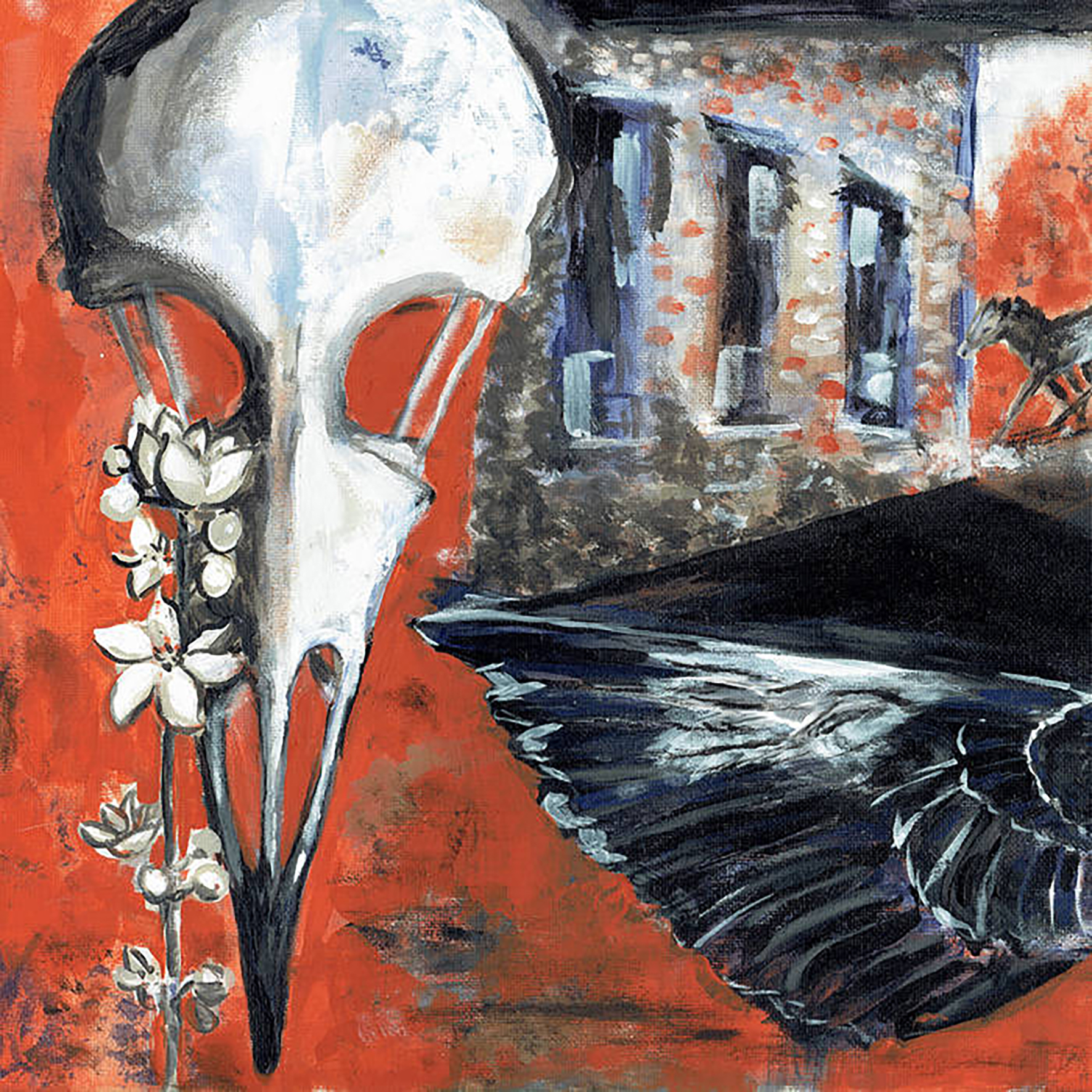
I am kicking myself for not catching up on this post-Lost Trail project sooner, as the alarmingly prolific Zachary and Denny Corsa have a long history of making great music and they may very well have reached their zenith with this latest chapter in their collaborative evolution. That said, Nonconnah is something more than just a husband-and-wife duo, as the Corsas describes the endeavor as a "Memphis dronegaze collective." That is a bit of an understatement, given the far-reaching and eclectic array of luminaries that have turned up on past Nonconnah albums, but the heart of the project is the mingling of Zachary's guitar playing with Denny's field recordings. The "dronegaze" part of "dronegaze collective" is a bit of an understatement too, as it mostly just describes Zachary's sublime guitar aesthetic. Sadly, I cannot think of a glib combination of words that better encompasses what this first vinyl release from the project actually sounds like, but my best attempt is that it sounds like some shoegaze guitar god dropped by the GRM for a series of ecstatic-sounding improvisations with some brilliant musique concrète enthusiast, then wove all the coolest parts together into achingly beautiful and intricately layered sound collages. When Denny and Zachary are at their best, they are damn near untouchable, as I can think of no one else who so organically blurs together naked beauty, go-for-broke psychotropic brilliance, and immersive textural richness.
The vinyl version of the album ostensibly consists of four separate twelve-minute pieces, but each of those is further delineated into five separate movements, which makes for quite an unusual structure (the album feels like series of vignettes constantly segueing into different themes). Similarly, it is damn hard to figure out who is doing what on any given piece, as Zachary is credited with quite a wide array of sounds (noise, tapes, field recordings) that blur the lines between his contributions and Denny's. Guest collaborators Owen Pallett (strings) and Jenn Taiga (synths) are a bit easier to find in the mix, but individual performances are largely irrelevant, as one prominent feature of this album is its tendency to regularly blossom into complexly layered and rapturous "wall of sound" crescendos. In those delirious moments, it can sound like a dozen tapes playing at varying speeds in an abstract symphony of swooning, frayed beauty. Given that the album is essentially twenty individual pieces of varying lengths that bleed into one another, figuring out which title those moments of sublime, ecstatic transcendence correspond to is largely a fool's errand. The crucial thing is merely that there are plenty of them and that the more understated moments that bridge them are often wonderfully hallucinatory or strikingly lovely as well. For example, in the first side's "II. Changed In Autumn's Feral Depths" alone, the foursome pass through a dreamily warped and angelic choral passage, an interlude of chirping birds, an eerily poignant spoken word sample, a bittersweetly devastating string theme, and a gorgeously warbling and shivering climax of backwards guitar loops. Listening to it now, it feels like an absolute tour de force of distinctive and absolutely beguiling passages and it probably is not even my favorite of the album's four numbered sections: every single damn piece is a highlight. The digital version also includes two brief bonus tracks identified as excerpts and they are similarly brilliant (especially the roiling and roaring tape loop pile-up "Summer Sparkler Dream Cartridge"). Admittedly, some listeners might be a bit exasperated by the album's unusual structure and may find themselves wishing that certain passages had been expanded into fully formed, stand-alone compositions. Normally I would feel that way too, but the Corsas are making some of the most sublime, absorbing, and vividly textured music on earth right now, so any way they feel like presenting it is just fine by me. This is easily one of the finest albums that I have heard this year.
Samples can be found here.


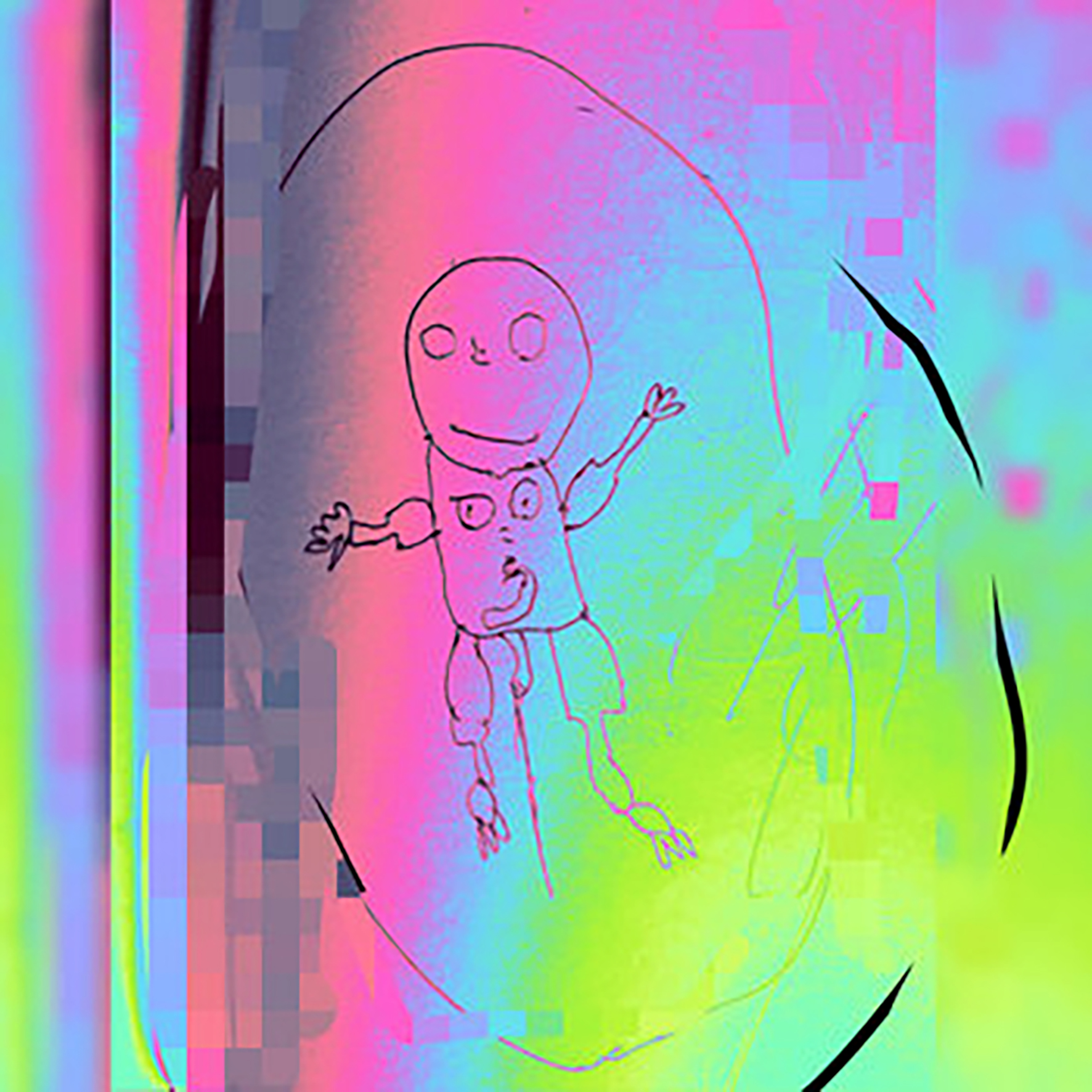 I was not familiar with this Norwegian artist until a few weeks ago, but I find that just about everything on Ireland's wonderfully weird and adventurous Fort Evil Fruit is worth hearing. That seems to be doubly true when an album also features amusingly Cronenbergian child art and a droll Coil reference. Unsurprisingly, Cronenberg and Coil are among Br√∏rby's many influences for this album, but they thankfully do not surface in derivative or unimaginative ways. Instead, Constant Shallowness Leads to Body Horror is an unexpectedly amiable "love letter to taste-defining early influences" presented as a flickering fever dream of Br√∏rby's fond childhood memories of grainy VHS films, surreal late night television commercials, videogames with friends, and the thrill of discovering underground music's weird and shadowy fringes. All of that predictably sounds great to me, but what makes this album even better is that Br√∏rby proves remarkably adept at filtering all of that into a focused, distinctive, and oft-beautiful vision. In its own bizarre way, Constant Shallowness is an outsider pop album, as the heart of these pieces is Br√∏rby's strong melodic sensibility and a real knack for cool percussion. That alone would be enough to make this a strong release, but Br√∏rby went one step further and enveloped his warm, ramshackle, and endearingly lovely pop vignettes in a stammering, obsessive, and phantasmagoric swirl of vividly multidimensional mindfuckery. He is exceptionally good at that last bit, making this one hell of a immersive album.
I was not familiar with this Norwegian artist until a few weeks ago, but I find that just about everything on Ireland's wonderfully weird and adventurous Fort Evil Fruit is worth hearing. That seems to be doubly true when an album also features amusingly Cronenbergian child art and a droll Coil reference. Unsurprisingly, Cronenberg and Coil are among Brørby's many influences for this album, but they thankfully do not surface in derivative or unimaginative ways. Instead, Constant Shallowness Leads to Body Horror is an unexpectedly amiable "love letter to taste-defining early influences" presented as a flickering fever dream of Brørby's fond childhood memories of grainy VHS films, surreal late night television commercials, videogames with friends, and the thrill of discovering underground music's weird and shadowy fringes. All of that predictably sounds great to me, but what makes this album even better is that Brørby proves remarkably adept at filtering all of that into a focused, distinctive, and oft-beautiful vision. In its own bizarre way, Constant Shallowness is an outsider pop album, as the heart of these pieces is Brørby's strong melodic sensibility and a real knack for cool percussion. That alone would be enough to make this a strong release, but Brørby went one step further and enveloped his warm, ramshackle, and endearingly lovely pop vignettes in a stammering, obsessive, and phantasmagoric swirl of vividly multidimensional mindfuckery. He is exceptionally good at that last bit, making this one hell of a immersive album. Sarah Lipstate's latest opus enigmatically borrows its title from a disorder in which those afflicted lose the ability to create mental imagery and associations (it literally translates as "without imagination"). If there is a polar opposite of that disorder, there is a strong probability that Lipstate has it, as Aphantasia is an absolute tour de force of imaginative, vividly realized visions. In fact, there are twenty-two such self-contained visions on the album and very few of them stretch beyond a minute or two in length. That can be a bit exasperating at times, as the most wonderful ideas are often some of the most ephemeral, but the sheer volume of killer motifs on display could have been the framework for four albums of great fully formed songs rather than one dazzling array of brief vignettes. That unusual album structure was entirely by design, of course, as Lipstate viewed each song as a "a short sharp flash," further noting that "if her usual process brought about cinematic results, these were something new – something swift and intriguing." The "something new" is that the album is intended as something akin to a poetry collection, and it succeeds admirably in that light while still remaining extremely damn cinematic regardless. The fragmentary nature of this album will likely garner a somewhat polarized response from fans, but I doubt that anyone will question whether Lipstate is at the height of her creative powers right now.
Sarah Lipstate's latest opus enigmatically borrows its title from a disorder in which those afflicted lose the ability to create mental imagery and associations (it literally translates as "without imagination"). If there is a polar opposite of that disorder, there is a strong probability that Lipstate has it, as Aphantasia is an absolute tour de force of imaginative, vividly realized visions. In fact, there are twenty-two such self-contained visions on the album and very few of them stretch beyond a minute or two in length. That can be a bit exasperating at times, as the most wonderful ideas are often some of the most ephemeral, but the sheer volume of killer motifs on display could have been the framework for four albums of great fully formed songs rather than one dazzling array of brief vignettes. That unusual album structure was entirely by design, of course, as Lipstate viewed each song as a "a short sharp flash," further noting that "if her usual process brought about cinematic results, these were something new – something swift and intriguing." The "something new" is that the album is intended as something akin to a poetry collection, and it succeeds admirably in that light while still remaining extremely damn cinematic regardless. The fragmentary nature of this album will likely garner a somewhat polarized response from fans, but I doubt that anyone will question whether Lipstate is at the height of her creative powers right now.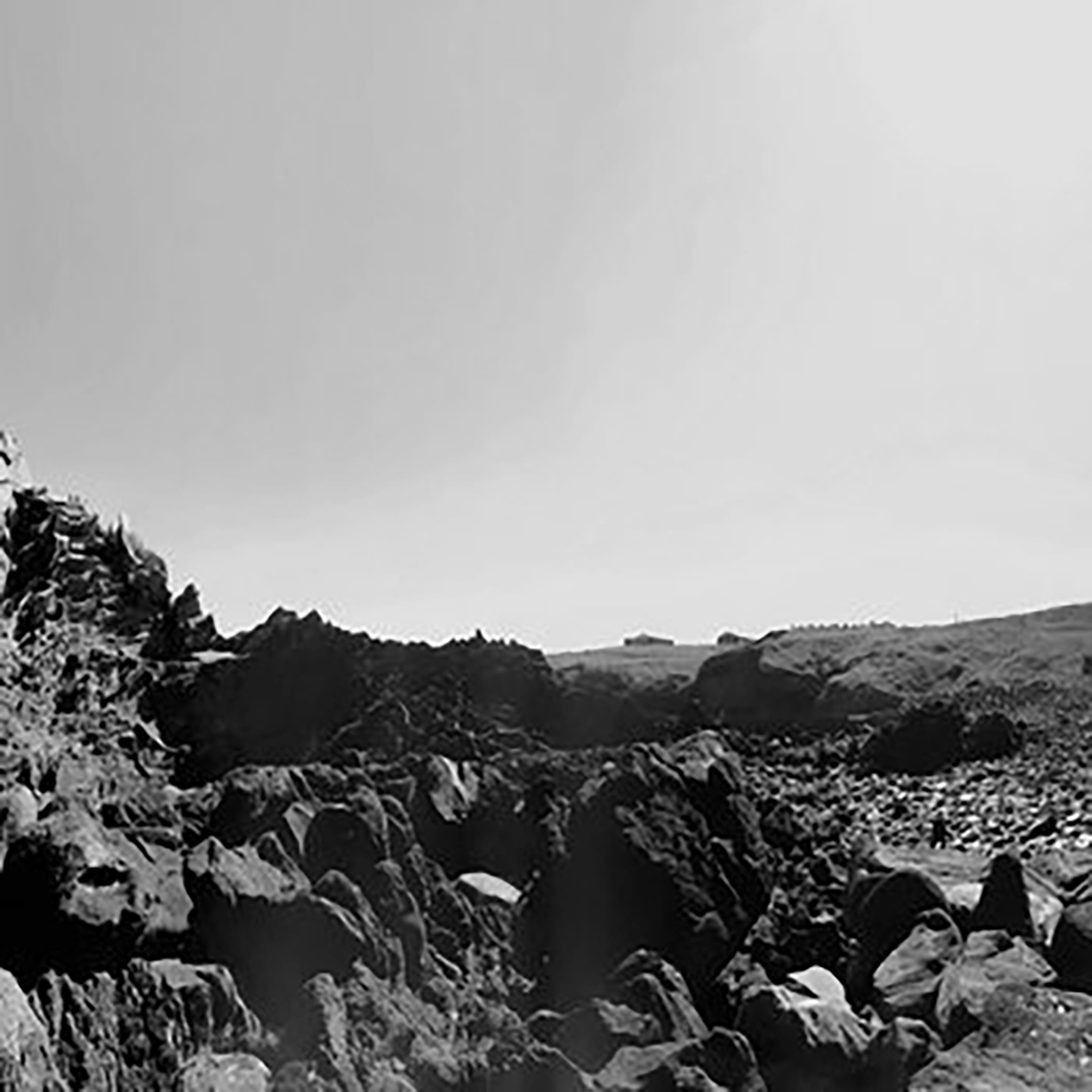 My relationship with Ben Chasny's discography has always been a hit-or-miss one, as some of his albums are very much Not For Me, yet I can think of few other artists who are as intensely committed to endlessly evolving and trying out bold new ideas. This latest release is a prime example of that, as The Veiled Sea can be glibly described as "the album where Ben Chasny unleashes some absolutely face-melting shredfests." In characteristically open-minded fashion, Chasny drew inspiration for this album from an extremely unusual source: "'80s American pop shredder" Steve Stevens, who I knew primarily as Billy Idol's guitarist, but who others may recall from the theme from Top Gun (or Michael Jackson's "Dirty Diana"). Given that Top Gun and contemporary psychedelia seem like a truly deranged collision of aesthetics to bring together, I was a bit apprehensive about this release and expected an audaciously over-the-top album that I would probably only listen to once. Instead, it was something considerably more soulful and compelling than I ever expected, as Chasny swings for the fences on a couple of songs and connects beautifully, crafting a pair of the most perfect pieces of his entire career. There is also a wild Faust cover and some more ambient-minded pieces rounding out the album to varying degrees of success, but the only crucial thing to know about The Veiled Sea is that "Last Station, Veiled Sea" may very well be the "must hear" song of the year in underground music circles.
My relationship with Ben Chasny's discography has always been a hit-or-miss one, as some of his albums are very much Not For Me, yet I can think of few other artists who are as intensely committed to endlessly evolving and trying out bold new ideas. This latest release is a prime example of that, as The Veiled Sea can be glibly described as "the album where Ben Chasny unleashes some absolutely face-melting shredfests." In characteristically open-minded fashion, Chasny drew inspiration for this album from an extremely unusual source: "'80s American pop shredder" Steve Stevens, who I knew primarily as Billy Idol's guitarist, but who others may recall from the theme from Top Gun (or Michael Jackson's "Dirty Diana"). Given that Top Gun and contemporary psychedelia seem like a truly deranged collision of aesthetics to bring together, I was a bit apprehensive about this release and expected an audaciously over-the-top album that I would probably only listen to once. Instead, it was something considerably more soulful and compelling than I ever expected, as Chasny swings for the fences on a couple of songs and connects beautifully, crafting a pair of the most perfect pieces of his entire career. There is also a wild Faust cover and some more ambient-minded pieces rounding out the album to varying degrees of success, but the only crucial thing to know about The Veiled Sea is that "Last Station, Veiled Sea" may very well be the "must hear" song of the year in underground music circles. Room40 continues its campaign to celebrate this Argentinian composer's underheard body of work with a second volume of selected pieces very different from the voice- and field recording-centric fare of last year's Echos+. That said, Canto+ does share its predecessor's curatorial aesthetic of combining pieces from her more prolific ‘70s heyday with more recent work and the differing eras sit quite comfortably together. To some degree, Canto+ feels like a very synth-driven album, as there are plenty of modular synth sounds and textures fluttering and chirping around, but nailing down an overarching vision that unites these pieces is surprisingly elusive, as every piece is full of unexpected and surreal detours into unfamiliar terrain. In fact, that elusiveness is arguably what most defines Ferreyra's work the most here, as a major recurring theme of Canto+ is the organically fluid and oft-surprising way in which these pieces evolve: they never linger very long in familiar melodic or structural territory, yet they always wind up getting somewhere unique and compelling. Of the two Room40 collections, I still prefer Echos+ as a whole, but a piece like "Canto del loco (Mad Man's Song)" would probably be a highlight on just about any release (Ferreyra-related or otherwise). Ferreyra's vision can admittedly be challenging at times, but the rewards make it a journey well worth taking.
Room40 continues its campaign to celebrate this Argentinian composer's underheard body of work with a second volume of selected pieces very different from the voice- and field recording-centric fare of last year's Echos+. That said, Canto+ does share its predecessor's curatorial aesthetic of combining pieces from her more prolific ‘70s heyday with more recent work and the differing eras sit quite comfortably together. To some degree, Canto+ feels like a very synth-driven album, as there are plenty of modular synth sounds and textures fluttering and chirping around, but nailing down an overarching vision that unites these pieces is surprisingly elusive, as every piece is full of unexpected and surreal detours into unfamiliar terrain. In fact, that elusiveness is arguably what most defines Ferreyra's work the most here, as a major recurring theme of Canto+ is the organically fluid and oft-surprising way in which these pieces evolve: they never linger very long in familiar melodic or structural territory, yet they always wind up getting somewhere unique and compelling. Of the two Room40 collections, I still prefer Echos+ as a whole, but a piece like "Canto del loco (Mad Man's Song)" would probably be a highlight on just about any release (Ferreyra-related or otherwise). Ferreyra's vision can admittedly be challenging at times, but the rewards make it a journey well worth taking. Newly remastered by Rashad Becker and given a vinyl reissue, Relentless Trills first surfaced on cassette as part of Boomkat's eclectic Documenting Sound series devoted to home recordings made during the pandemic. Given those origins, it makes sense that this full-length debut showcases a very different side of DJ Plead's artistry than his impressive run of oft-killer EPs. Given that, curious listeners intrigued by the Australian producer's unique blend of cutting edge UK dance subgenres with Middle Eastern influences like dabke and mahraganat should probably head to 2020's Going For It EP first to experience the "out-of-control Lebanese wedding party" brilliance of prime DJ Plead before exploring this inspired detour. That said, this surprisingly experimental, stripped-down, and post-punk-adjacent departure from his strengths is quite a compelling listen in its own right. Boomkat's description rightly tosses around adjectives like "humid" and "sensual" to describe this bedroom DIY fantasia of floating Middle Eastern melodies and languorously simmering grooves, but that does not paint the entire picture, as Relentless Trills also masterfully dips its toes in hazy psychedelia, plunderphonics, and a hauntingly beautiful beatless synth piece. The latter ("RT6") unexpectedly steals the show, as DJ Plead (Jarred Beeler) has a remarkably great ear for melody and atmosphere, yet this entire release is quite a singular, propulsive, and (of course) sensually humid experience from start to finish.
Newly remastered by Rashad Becker and given a vinyl reissue, Relentless Trills first surfaced on cassette as part of Boomkat's eclectic Documenting Sound series devoted to home recordings made during the pandemic. Given those origins, it makes sense that this full-length debut showcases a very different side of DJ Plead's artistry than his impressive run of oft-killer EPs. Given that, curious listeners intrigued by the Australian producer's unique blend of cutting edge UK dance subgenres with Middle Eastern influences like dabke and mahraganat should probably head to 2020's Going For It EP first to experience the "out-of-control Lebanese wedding party" brilliance of prime DJ Plead before exploring this inspired detour. That said, this surprisingly experimental, stripped-down, and post-punk-adjacent departure from his strengths is quite a compelling listen in its own right. Boomkat's description rightly tosses around adjectives like "humid" and "sensual" to describe this bedroom DIY fantasia of floating Middle Eastern melodies and languorously simmering grooves, but that does not paint the entire picture, as Relentless Trills also masterfully dips its toes in hazy psychedelia, plunderphonics, and a hauntingly beautiful beatless synth piece. The latter ("RT6") unexpectedly steals the show, as DJ Plead (Jarred Beeler) has a remarkably great ear for melody and atmosphere, yet this entire release is quite a singular, propulsive, and (of course) sensually humid experience from start to finish.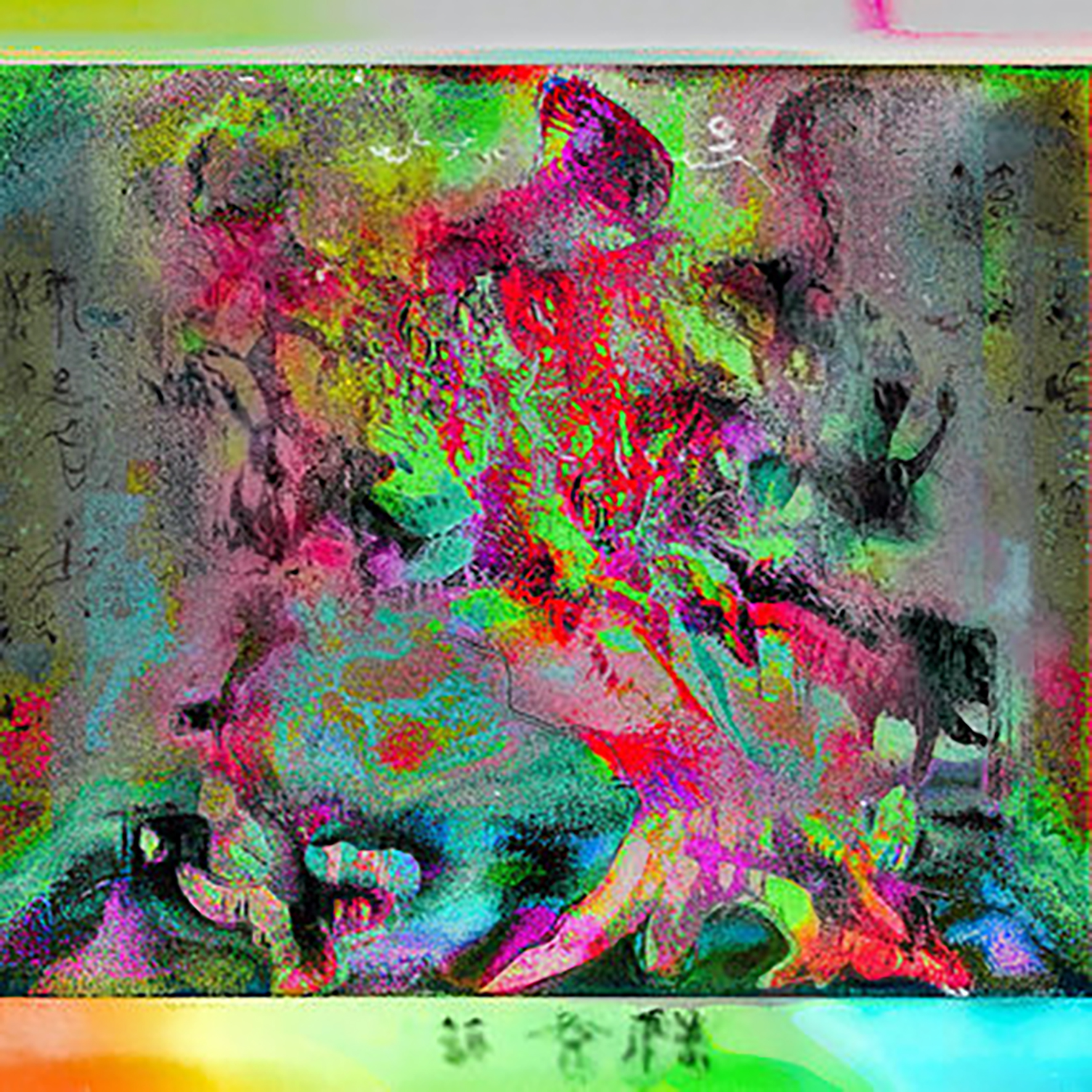 Unraveling the discography and line-up mutations of this Ho Chi Minh City-based collective turned out to be quite an unexpected challenge, as they have been releasing full-lengths and EPs since at least 2014, yet this latest album is being billed as the project's debut. I thought this might be the first release with "collective" appended to the group's name, but that is not the case either. That said, the project now appears to be a trio consisting of original members Phạm Thế Vũ and Jung Buffalo, as well as relatively recent addition Zach Schreier (who ostensibly composed much of the album). In any case, this latest release bears little stylistic resemblance to several of RCD's previous releases. Much of that is likely due to the involvement of Berlin-based producer Ziúr, who alternately punched up the songs to Subtext's exactingly high standards, "reduced them to a cinder," or "beamed them into the fifth dimension." Regardless of how this album took shape, it is quite a dazzling and deliriously kinetic achievement, resembling a freewheeling Carl Stone-esque plunderphonic tour de force of shapeshifting Vietnamese cultural fragments.
Unraveling the discography and line-up mutations of this Ho Chi Minh City-based collective turned out to be quite an unexpected challenge, as they have been releasing full-lengths and EPs since at least 2014, yet this latest album is being billed as the project's debut. I thought this might be the first release with "collective" appended to the group's name, but that is not the case either. That said, the project now appears to be a trio consisting of original members Phạm Thế Vũ and Jung Buffalo, as well as relatively recent addition Zach Schreier (who ostensibly composed much of the album). In any case, this latest release bears little stylistic resemblance to several of RCD's previous releases. Much of that is likely due to the involvement of Berlin-based producer Ziúr, who alternately punched up the songs to Subtext's exactingly high standards, "reduced them to a cinder," or "beamed them into the fifth dimension." Regardless of how this album took shape, it is quite a dazzling and deliriously kinetic achievement, resembling a freewheeling Carl Stone-esque plunderphonic tour de force of shapeshifting Vietnamese cultural fragments.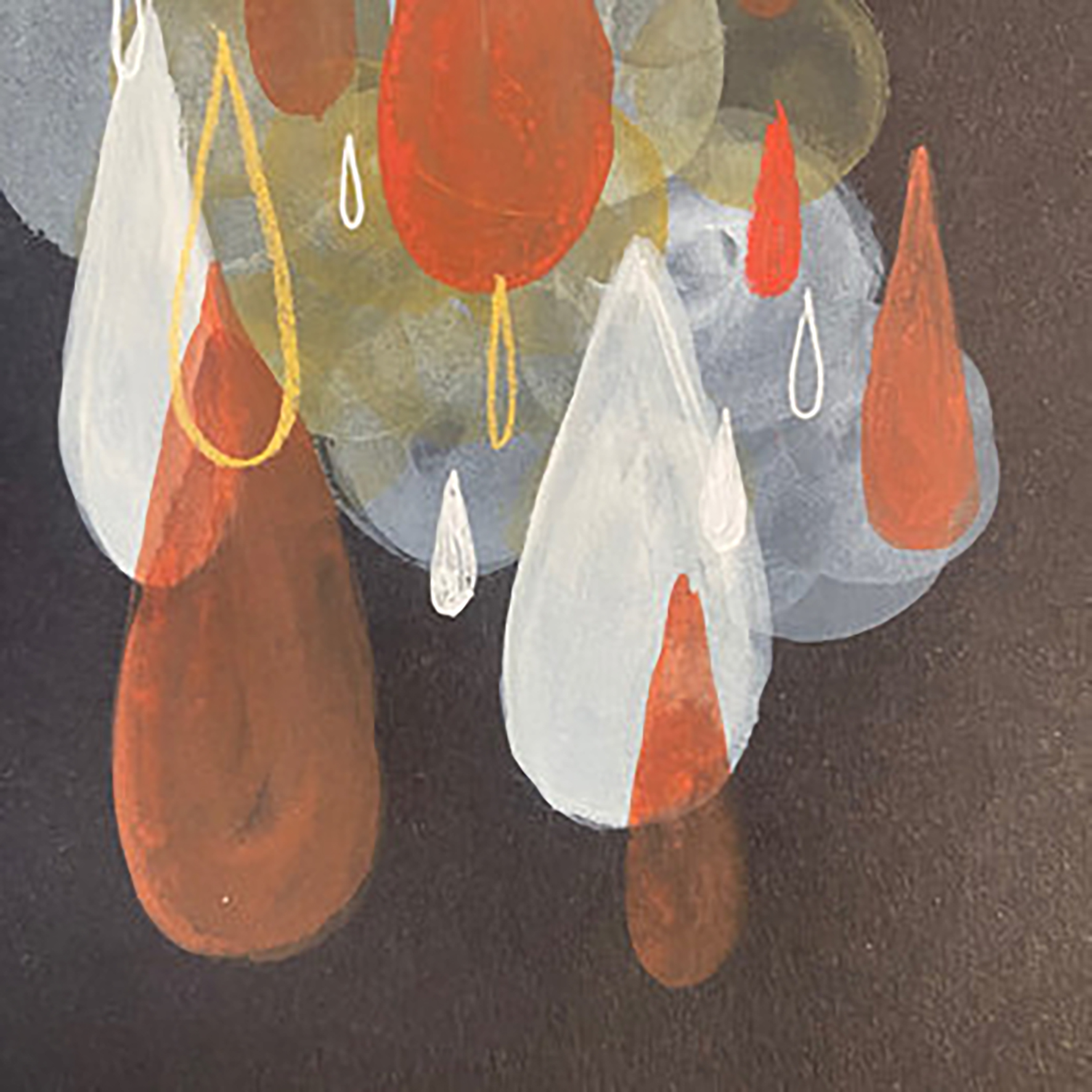 As alluded to in its title, Dispatches from the Drift is something of an accidental album, as it is a collection of keyboard improvisations that Tara Jane O'Neil informally recorded during the pandemic lockdown that were never intended for release. In fact, many were casually recorded on her phone and most "were promptly forgotten," but O'Neil happened to stumble back upon them while digging around for fragments of inspiration that could blossom into fully formed songs. These are not the ones met that criteria. but they amount to something similarly wonderful. As O'Neil herself puts it, these pieces are the ones that "were not looking for a form or seeking to be known," so she decided to present them as they were without further polishing or embellishment ("complete, traveling pieces that resolve or simply end"). In lesser hands, such an album would feel like a series of unfinished sketches, but O'Neil's instincts regarding this experiment are remarkably unerring. For the most part, the "keyboard improvisations" origin ensures that the album tends to linger in pleasantly blurred "ambient" territory, but there are quite a few striking surprises lurking here too (some very "dreampop" and some considerably more outré). The entire album is quite a leftfield delight though, as it feels every bit as strong as O'Neil's more formal work. Her inspiration simply took a different shape this time around.
As alluded to in its title, Dispatches from the Drift is something of an accidental album, as it is a collection of keyboard improvisations that Tara Jane O'Neil informally recorded during the pandemic lockdown that were never intended for release. In fact, many were casually recorded on her phone and most "were promptly forgotten," but O'Neil happened to stumble back upon them while digging around for fragments of inspiration that could blossom into fully formed songs. These are not the ones met that criteria. but they amount to something similarly wonderful. As O'Neil herself puts it, these pieces are the ones that "were not looking for a form or seeking to be known," so she decided to present them as they were without further polishing or embellishment ("complete, traveling pieces that resolve or simply end"). In lesser hands, such an album would feel like a series of unfinished sketches, but O'Neil's instincts regarding this experiment are remarkably unerring. For the most part, the "keyboard improvisations" origin ensures that the album tends to linger in pleasantly blurred "ambient" territory, but there are quite a few striking surprises lurking here too (some very "dreampop" and some considerably more outré). The entire album is quite a leftfield delight though, as it feels every bit as strong as O'Neil's more formal work. Her inspiration simply took a different shape this time around.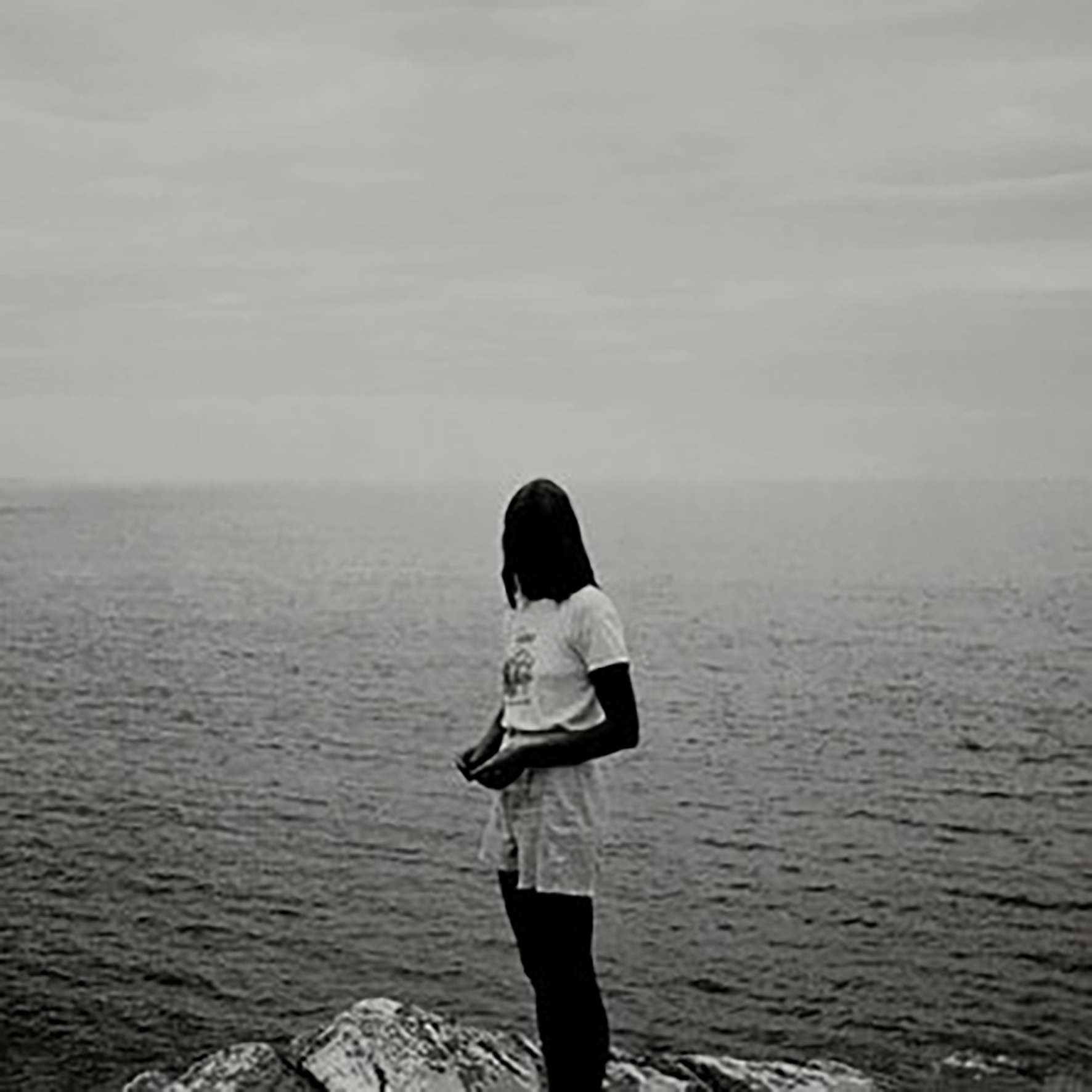 This latest album from Madeline Johnston takes its title from a forensic chemical that emits a blue glow when it comes in contact with blood at a crime scene. That macabre yet beautiful transformation provides the album's guiding metaphor, as Johnston attempts the similar feat of "turning trial and tribulation into sources of light." That is thematically familiar Midwife territory, of course, but Luminol feels like the beginning of a new phase stylistically, as these songs are simultaneously more anthemic and more starkly minimal than the project’s previous fare. While that is not necessarily an unstable combination, Johnston does tone down her artier tendencies to fitfully showcase a newfound love of tighter songcraft and hard rock-inspired swagger. That approach suits her unexpectedly well, as some of the better moments of Luminol resemble a hiss-ravaged shoegaze deconstruction of a power ballad by someone like Lita Ford, Pat Benatar, or Joan Jett, which is certainly something I was not expecting to encounter here. Luminol is definitely more of an straightforward "rock" record than I anticipated. For the most part, however, Johnston’s hazy, slow-motion, and abstracted homages to ‘80s and ‘90s rock radio work quite well, as this album seems to have instantly become a fan favorite. Some fans of previous albums will likely miss Midwife's sharper edges, but I suspect most will warm to this more punchy and comparatively playful side of Johnston's art.
This latest album from Madeline Johnston takes its title from a forensic chemical that emits a blue glow when it comes in contact with blood at a crime scene. That macabre yet beautiful transformation provides the album's guiding metaphor, as Johnston attempts the similar feat of "turning trial and tribulation into sources of light." That is thematically familiar Midwife territory, of course, but Luminol feels like the beginning of a new phase stylistically, as these songs are simultaneously more anthemic and more starkly minimal than the project’s previous fare. While that is not necessarily an unstable combination, Johnston does tone down her artier tendencies to fitfully showcase a newfound love of tighter songcraft and hard rock-inspired swagger. That approach suits her unexpectedly well, as some of the better moments of Luminol resemble a hiss-ravaged shoegaze deconstruction of a power ballad by someone like Lita Ford, Pat Benatar, or Joan Jett, which is certainly something I was not expecting to encounter here. Luminol is definitely more of an straightforward "rock" record than I anticipated. For the most part, however, Johnston’s hazy, slow-motion, and abstracted homages to ‘80s and ‘90s rock radio work quite well, as this album seems to have instantly become a fan favorite. Some fans of previous albums will likely miss Midwife's sharper edges, but I suspect most will warm to this more punchy and comparatively playful side of Johnston's art.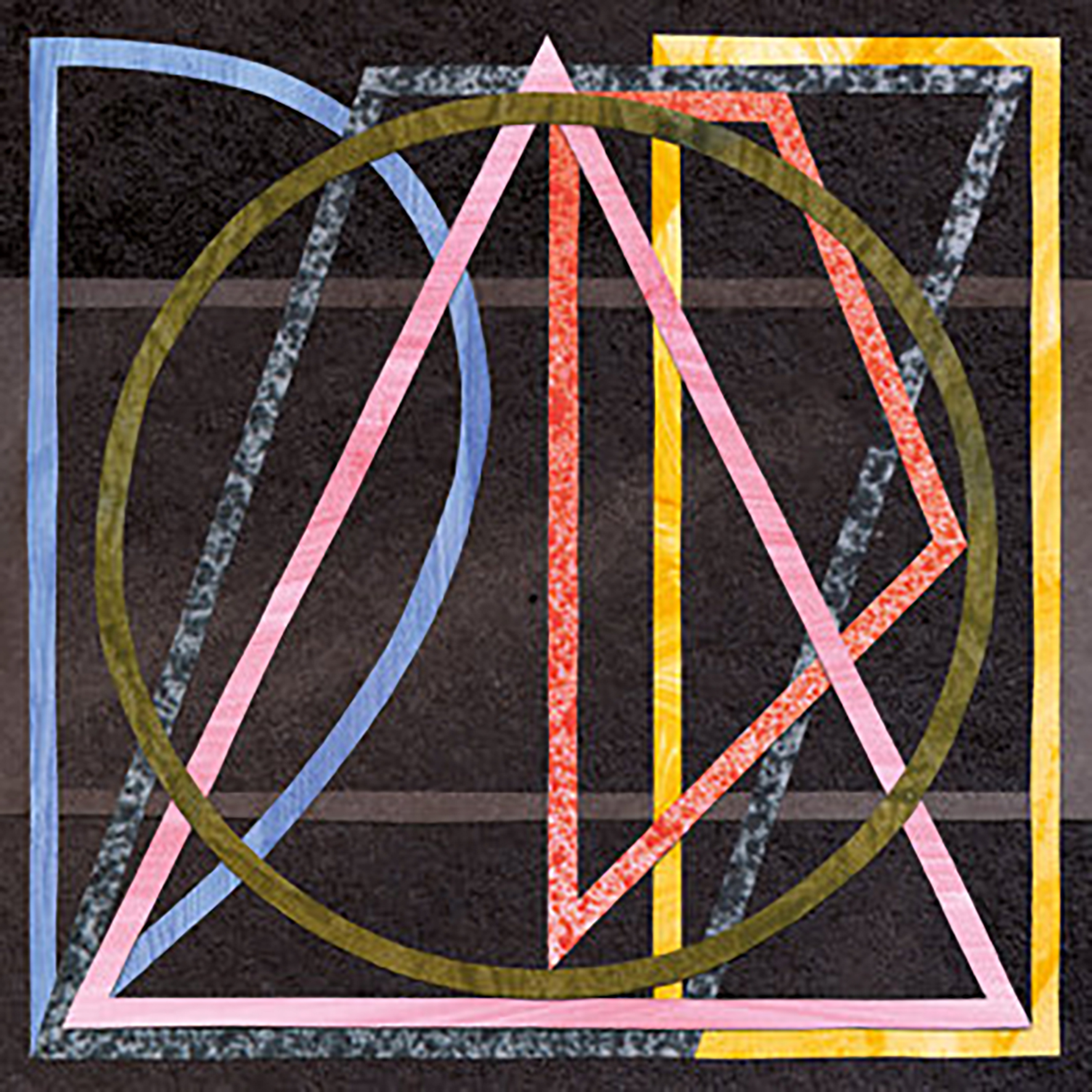 When I first found out about this album, I was not quite sure how to feel about its ambitious structural premise, as the idea of a vinyl record with 112 locked grooves felt suspiciously like a willfully annoying conceptual art statement. That said, I am unable to ever resist the allure of a killer drummer in an indulgent mood, so I was still quite eager to hear what Sartorius had planned for his unique format. My first impression was a favorable one, as I have been on a bit of a Niagara bender and the shifting beat patterns here called to mind a slowed and deconstructed kindred spirit to the tour de force of "Sangandongo." My next impression was mild exasperation, as I was not thrilled that every amazing beat lasted a mere minute before giving way to something new. That revealed the appeal of the physical release though, as this album is packed full of hypnotic rhythms that would make absolutely trance-inducing infinite loops. Naturally, that opens up a host of compelling interactive ways to experience the album, as it is a Pandora's box of multifarious percussive delights. To some degree, I expected something in that vein (as far as gimmicks go, this is a very cool and well thought-out one), but I was still blindsided by both the sheer imagination of Sartorius's rhythms and the way the album as a whole feels like a transcendent psychedelic epic by the end. As La Monte Young and others have decisively proven, sustained immersion in a very insistent and focused vision can feel like a remarkably profound and mind-rewiring experience.
When I first found out about this album, I was not quite sure how to feel about its ambitious structural premise, as the idea of a vinyl record with 112 locked grooves felt suspiciously like a willfully annoying conceptual art statement. That said, I am unable to ever resist the allure of a killer drummer in an indulgent mood, so I was still quite eager to hear what Sartorius had planned for his unique format. My first impression was a favorable one, as I have been on a bit of a Niagara bender and the shifting beat patterns here called to mind a slowed and deconstructed kindred spirit to the tour de force of "Sangandongo." My next impression was mild exasperation, as I was not thrilled that every amazing beat lasted a mere minute before giving way to something new. That revealed the appeal of the physical release though, as this album is packed full of hypnotic rhythms that would make absolutely trance-inducing infinite loops. Naturally, that opens up a host of compelling interactive ways to experience the album, as it is a Pandora's box of multifarious percussive delights. To some degree, I expected something in that vein (as far as gimmicks go, this is a very cool and well thought-out one), but I was still blindsided by both the sheer imagination of Sartorius's rhythms and the way the album as a whole feels like a transcendent psychedelic epic by the end. As La Monte Young and others have decisively proven, sustained immersion in a very insistent and focused vision can feel like a remarkably profound and mind-rewiring experience.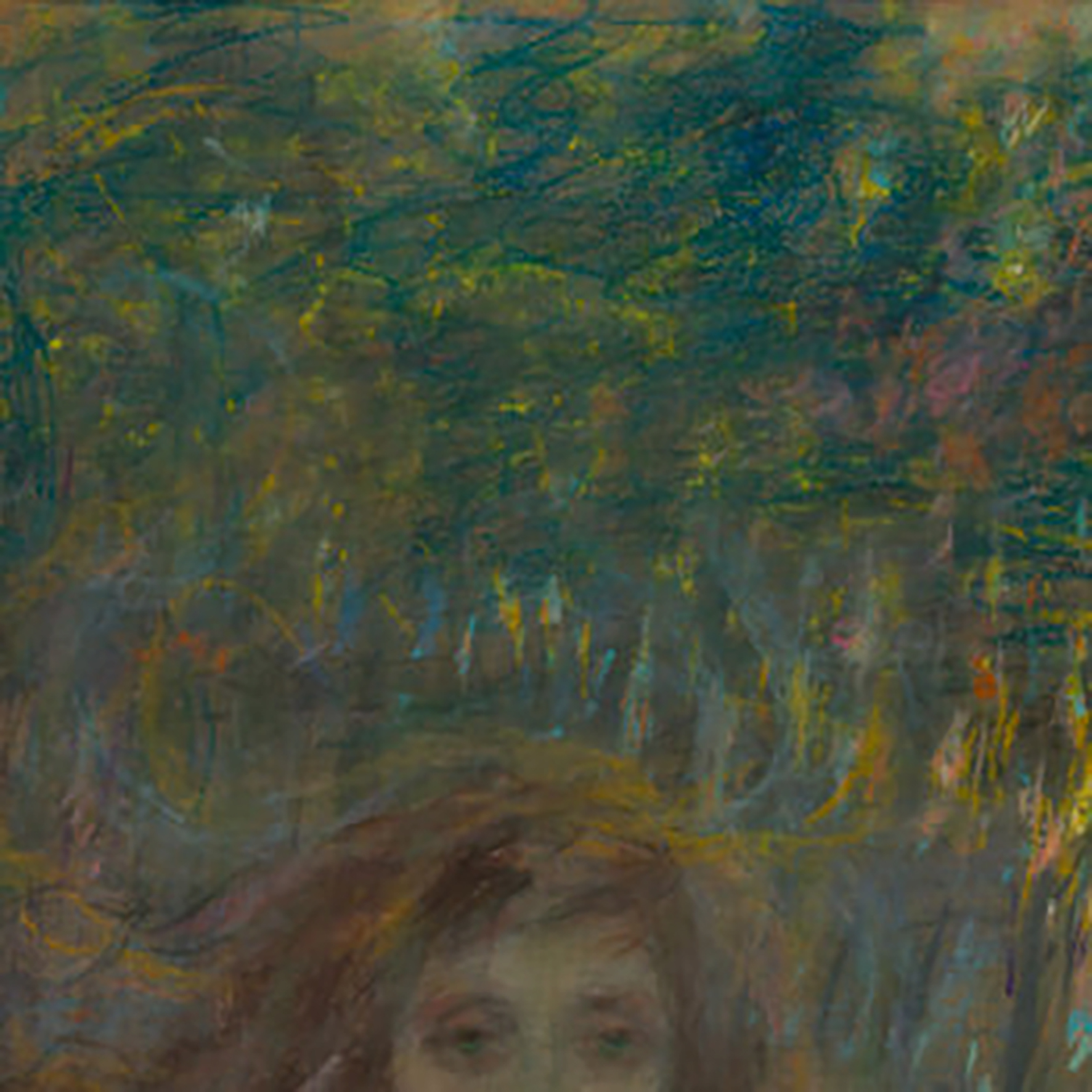 This appears to be the first major release for this long-running (if fitful) Pye Corner Audio side project, as Martin Jenkins' previous albums under this alias have all been limited CD-Rs. It certainly feels like a suitably strong statement for such an occasion. In the words of Ecstatic, Spectral Corridor "treads the line between occult soundtrack and zonked out space jam," which is a fairly apt characterization of Jenkins' latest aesthetic evolution even if it does not quite do justice to the sublime beauty of some of these pieces. According to Jenkins, this project draws its inspiration from "field recordings of walks through forests wielding finger chimes, long slow tape loops, treated guitars, elegiac organ tones, free running oscillator banks and chance operations," which mostly translates into slowly pulsing drones, subtle psychedelic touches, and a pervading air of shadowy mystery. That said, Spectral Corridor sounds considerably different from its more lush 2013 predecessor Bucolica, as Jenkins clearly took the "spectral" part of the album title very seriously, distilling his synth-centric ambient/drone to a wonderfully haunted-sounding and elegantly brooding suite of gently phantasmagoric soundscapes.
This appears to be the first major release for this long-running (if fitful) Pye Corner Audio side project, as Martin Jenkins' previous albums under this alias have all been limited CD-Rs. It certainly feels like a suitably strong statement for such an occasion. In the words of Ecstatic, Spectral Corridor "treads the line between occult soundtrack and zonked out space jam," which is a fairly apt characterization of Jenkins' latest aesthetic evolution even if it does not quite do justice to the sublime beauty of some of these pieces. According to Jenkins, this project draws its inspiration from "field recordings of walks through forests wielding finger chimes, long slow tape loops, treated guitars, elegiac organ tones, free running oscillator banks and chance operations," which mostly translates into slowly pulsing drones, subtle psychedelic touches, and a pervading air of shadowy mystery. That said, Spectral Corridor sounds considerably different from its more lush 2013 predecessor Bucolica, as Jenkins clearly took the "spectral" part of the album title very seriously, distilling his synth-centric ambient/drone to a wonderfully haunted-sounding and elegantly brooding suite of gently phantasmagoric soundscapes.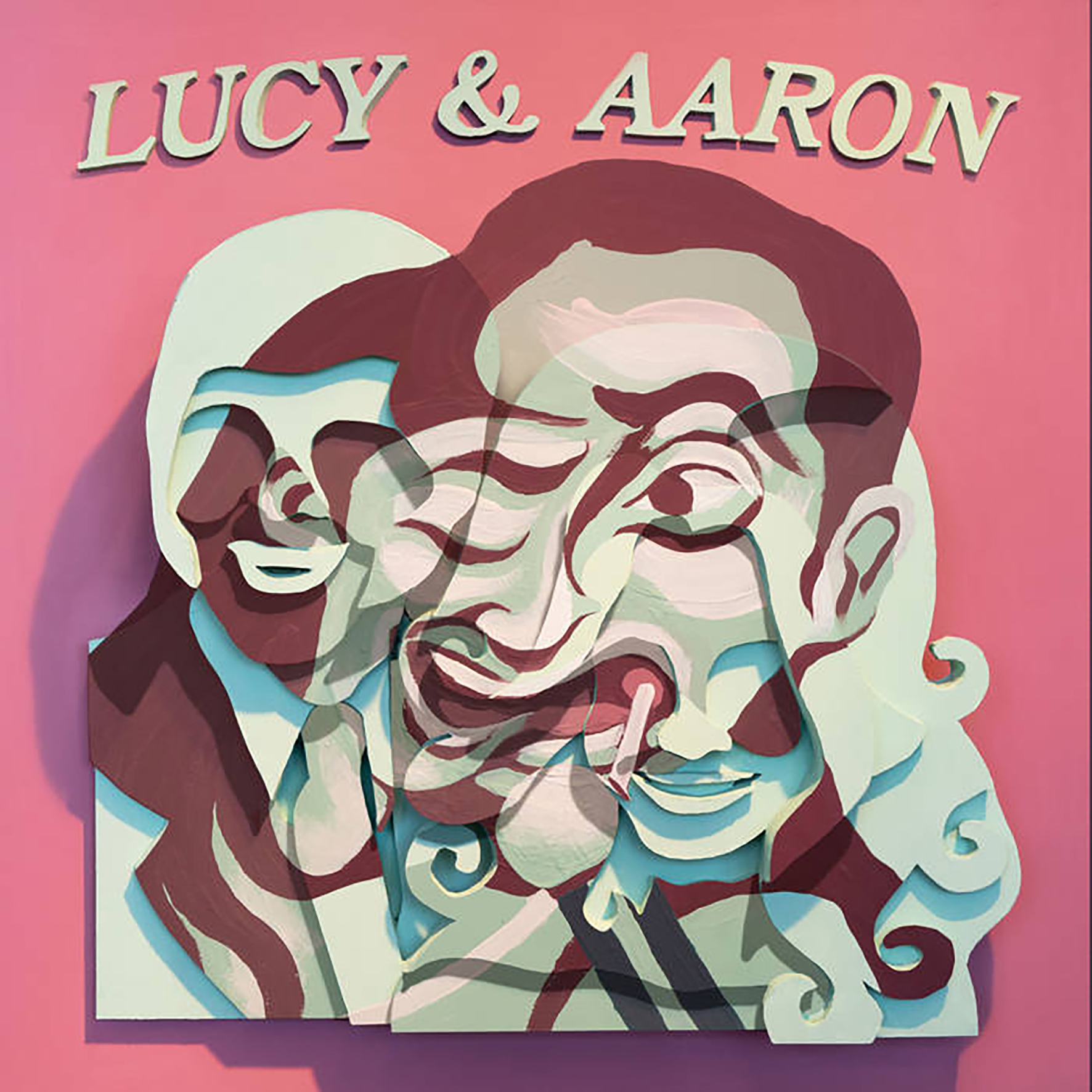 The underground/experimental music world is full of promising-sounding collaborations that yield underwhelming or half-baked results, but Lucy & Aaron is a wonderfully refreshing exception to that recurring phenomenon. Part of that success is likely due to the pair's long history together, as they have been fans of each other's work (and close friends) since meeting at a festival in Madeira back in 2010. Moreover, Dalt and Dilloway have actually inspired and impacted each other's work over the years, which probably went a long way in setting the stage for such a natural-sounding and symbiotic blurring together of visions. As Dalt puts it, "we crossed our signals, sometimes his affecting mine, or the other way around, we just wanted to make a fun, weird and inevitably emotive record that somehow captured so many things we love about music." Naturally, Dilloway's endearingly disorienting and creepy tape loops tend to be the foundation for much of the album, as Dalt's own backdrops tend to be quite stark and minimal. The mood of the album is quite a bit different from typical Dilloway fare, however, as Dalt's melodic influence transforms his obsessively repeating fragments of simmering psychotropic weirdness into a broken and playfully warped "pop" album like no other.
The underground/experimental music world is full of promising-sounding collaborations that yield underwhelming or half-baked results, but Lucy & Aaron is a wonderfully refreshing exception to that recurring phenomenon. Part of that success is likely due to the pair's long history together, as they have been fans of each other's work (and close friends) since meeting at a festival in Madeira back in 2010. Moreover, Dalt and Dilloway have actually inspired and impacted each other's work over the years, which probably went a long way in setting the stage for such a natural-sounding and symbiotic blurring together of visions. As Dalt puts it, "we crossed our signals, sometimes his affecting mine, or the other way around, we just wanted to make a fun, weird and inevitably emotive record that somehow captured so many things we love about music." Naturally, Dilloway's endearingly disorienting and creepy tape loops tend to be the foundation for much of the album, as Dalt's own backdrops tend to be quite stark and minimal. The mood of the album is quite a bit different from typical Dilloway fare, however, as Dalt's melodic influence transforms his obsessively repeating fragments of simmering psychotropic weirdness into a broken and playfully warped "pop" album like no other. This is Pietrusko's first solo album under his own name, but sound art enthusiasts will likely remember his previous outing as Six Microphones (2019). Elegiya is a radically different release, however, as it comfortably fits within the more ambient/drone side of Room40's aesthetic on its surface. Beneath the surface, however, lies a roiling emotional intensity that sometimes becomes downright volcanic. As befits the album's title, Pietrusko drew his inspiration from elegies, but does so in a very unconventional way, as he was most fascinated by themes of repetition and shifting context. As he himself puts it, "the creation and performance of an elegy, however, is not an experience of this original sorrow but is instead its repetition." The more interesting part, however, is that Pietrusku "attempts to capture the contradictory condition of a macro-level stasis versus a tumultuous interior." In more practical terms, that means that Elegiya transforms five piano motifs into a suite of beautifully melancholy ambient pieces that self-destruct into frayed, blown-out eruptions of emotional catharsis.
This is Pietrusko's first solo album under his own name, but sound art enthusiasts will likely remember his previous outing as Six Microphones (2019). Elegiya is a radically different release, however, as it comfortably fits within the more ambient/drone side of Room40's aesthetic on its surface. Beneath the surface, however, lies a roiling emotional intensity that sometimes becomes downright volcanic. As befits the album's title, Pietrusko drew his inspiration from elegies, but does so in a very unconventional way, as he was most fascinated by themes of repetition and shifting context. As he himself puts it, "the creation and performance of an elegy, however, is not an experience of this original sorrow but is instead its repetition." The more interesting part, however, is that Pietrusku "attempts to capture the contradictory condition of a macro-level stasis versus a tumultuous interior." In more practical terms, that means that Elegiya transforms five piano motifs into a suite of beautifully melancholy ambient pieces that self-destruct into frayed, blown-out eruptions of emotional catharsis. Back in 2019, Helen Scarsdale celebrated its 50th release with a ten-cassette wooden box, On Corrosion, that immediately sold out. While I did manage to pounce on that landmark release in time to get one, I have not spent nearly enough time with it, as absorbing ten full-length albums is quite a herculean time commitment. Consequently, I was delighted to see that the label had embarked upon a campaign to reissue some (or all) of its contents and that they were starting with this bombshell from Gary Mundy's long-running Kleistwahr guise. Being a casual fan of Ramleh and the Broken Flag milieu, I thought I had a solid idea of what to expect from this project (noise, possibly involving guitars), but the striking and unique beauty of this album completely blindsided me. It is fitting that Winter debuted on a release entitled On Corrosion, as it has the feeling of an achingly gorgeous drone album that has been corroded and ravaged into something texturally complex and viscerally soulful.
Back in 2019, Helen Scarsdale celebrated its 50th release with a ten-cassette wooden box, On Corrosion, that immediately sold out. While I did manage to pounce on that landmark release in time to get one, I have not spent nearly enough time with it, as absorbing ten full-length albums is quite a herculean time commitment. Consequently, I was delighted to see that the label had embarked upon a campaign to reissue some (or all) of its contents and that they were starting with this bombshell from Gary Mundy's long-running Kleistwahr guise. Being a casual fan of Ramleh and the Broken Flag milieu, I thought I had a solid idea of what to expect from this project (noise, possibly involving guitars), but the striking and unique beauty of this album completely blindsided me. It is fitting that Winter debuted on a release entitled On Corrosion, as it has the feeling of an achingly gorgeous drone album that has been corroded and ravaged into something texturally complex and viscerally soulful.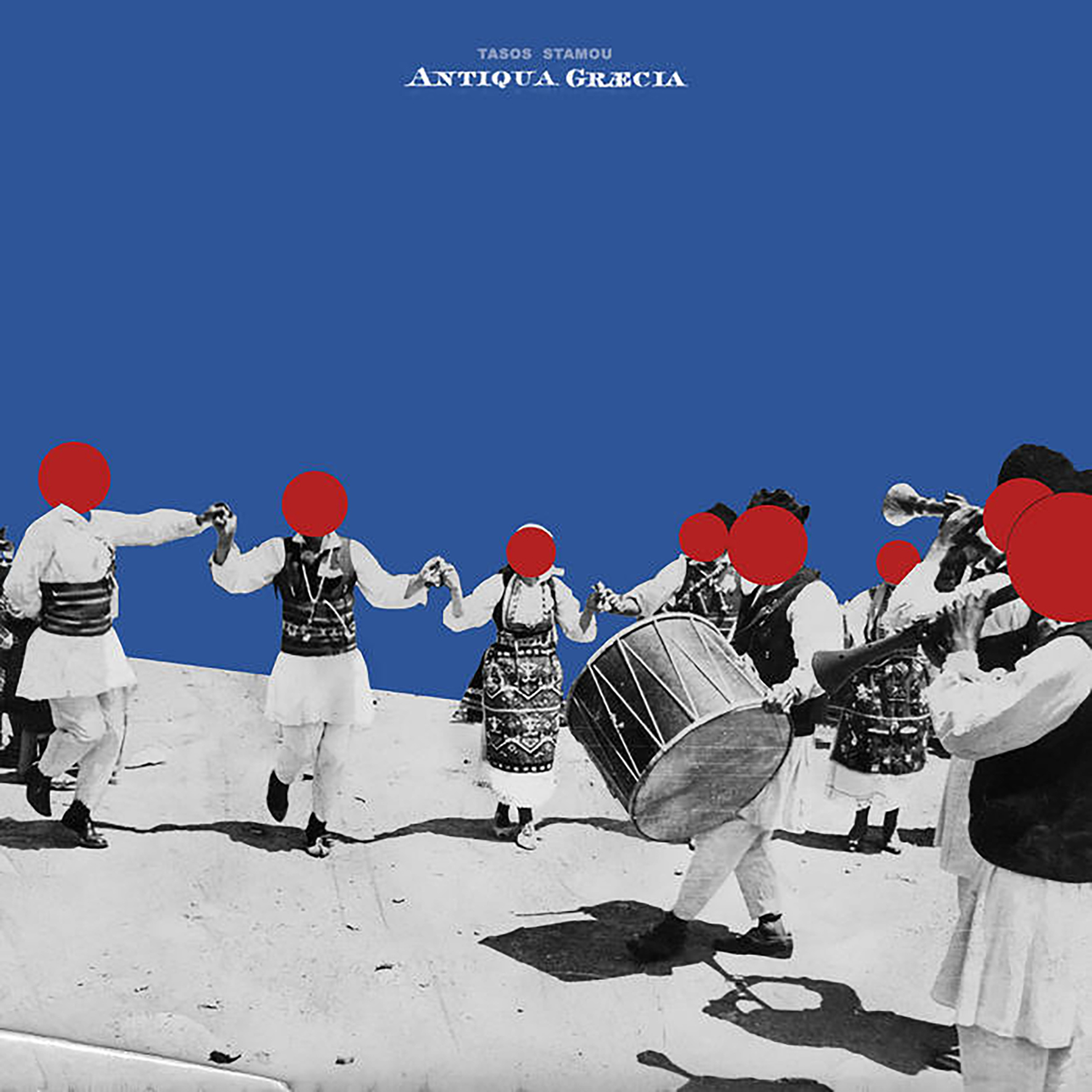 This London-based electroacoustic composer/instrument builder/DIY electronics enthusiast has been engaged in projects and activities for more than a decade now, but this latest album is the first time his singular vision crossed my path. Antiqua Graecia is the final release of a Greek-themed trilogy that began with 2018's Musique con Crète, though there is also a fourth related work that surfaced on Chocolate Monk last year (Greek Drama). The series is the fruit of an extended creative research project that initially began with a residency, but blossomed into repeat summer visits to Crete to hunt for traditional music albums, perform with local musicians, and make field recordings. While I have not fully absorbed the entire series yet, Antique Graecia feels like a significant creative leap forward from previous installments, as Tamou's earlier Greek forays resemble a Sublime Frequencies album dissolved into a fever dream: there was a clear reverence for the source material, yet Tamou's sound collages imbued traditional music with a murky, spectral character. With Antiqua Graecia, Tamou decided to go for broke, gleefully chopping and layering folk songs in a wonderfully psychotropic fantasia. I find all of the strains of Tamou's Greek series to be compelling, but this album is the one that most beautifully transcends tradition to feel like something wonderful and new.
This London-based electroacoustic composer/instrument builder/DIY electronics enthusiast has been engaged in projects and activities for more than a decade now, but this latest album is the first time his singular vision crossed my path. Antiqua Graecia is the final release of a Greek-themed trilogy that began with 2018's Musique con Crète, though there is also a fourth related work that surfaced on Chocolate Monk last year (Greek Drama). The series is the fruit of an extended creative research project that initially began with a residency, but blossomed into repeat summer visits to Crete to hunt for traditional music albums, perform with local musicians, and make field recordings. While I have not fully absorbed the entire series yet, Antique Graecia feels like a significant creative leap forward from previous installments, as Tamou's earlier Greek forays resemble a Sublime Frequencies album dissolved into a fever dream: there was a clear reverence for the source material, yet Tamou's sound collages imbued traditional music with a murky, spectral character. With Antiqua Graecia, Tamou decided to go for broke, gleefully chopping and layering folk songs in a wonderfully psychotropic fantasia. I find all of the strains of Tamou's Greek series to be compelling, but this album is the one that most beautifully transcends tradition to feel like something wonderful and new.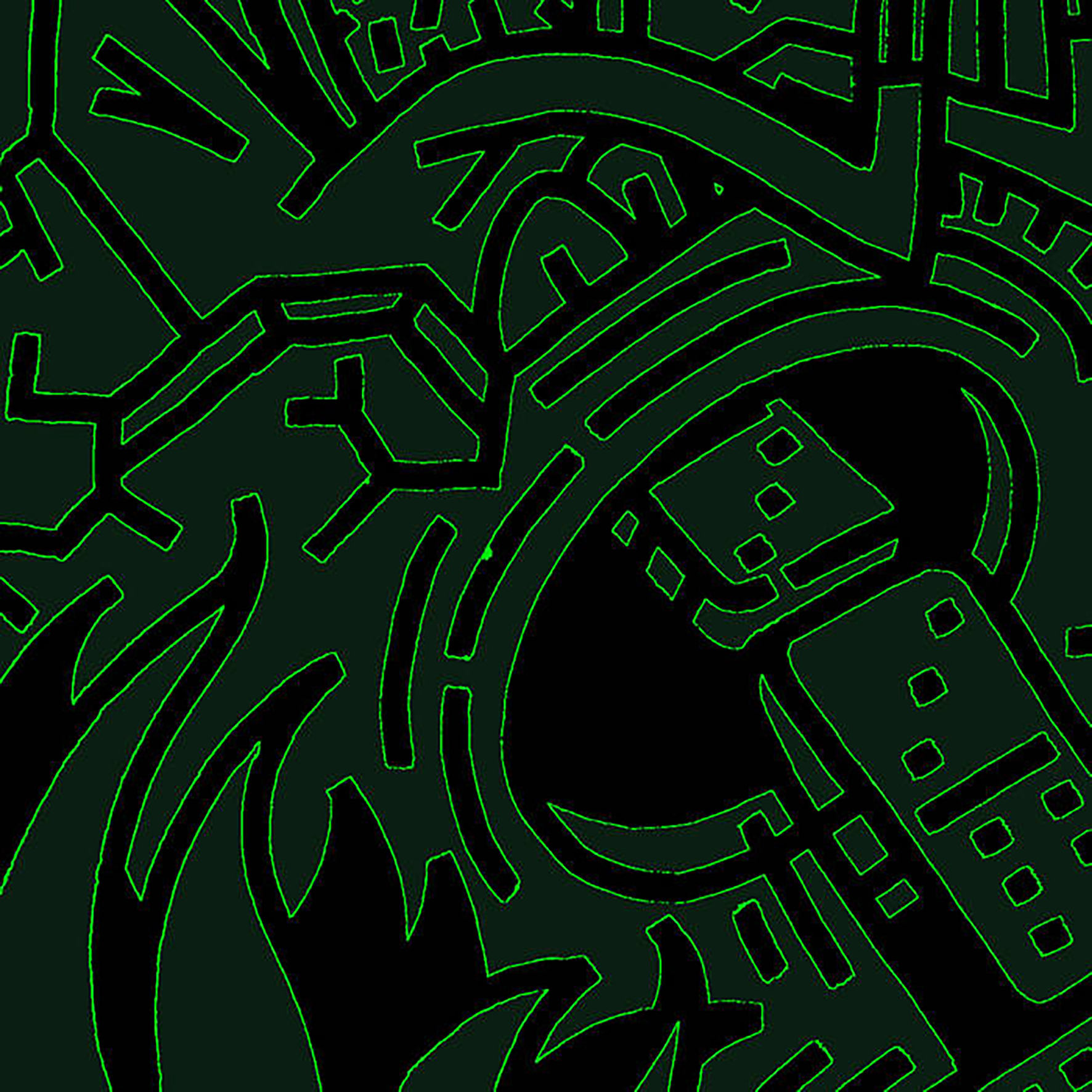 This debut full-length from Ugandan producer Zilla is something of a much-anticipated event, as his Boutiq studio is a crucial part of the killer underground music scene centered around Kampala's Nyege Nyege Tapes. Ekizikiza Mubwengula was additionally anticipated because it is the follow up to an absolute monster of a single that Zilla released in 2019 on Nyege Nyege's club music-themed sub-label Hakuna Kulala. While this latest release is on that same imprint, these songs are considerably wilder and weirder than the more straightforward (and relentlessly, viscerally danceable) "From the Cave." With Ekizikiza Mubwengula, Zilla shoots right past the cutting edge of contemporary dance music and lands somewhere akin to an industrial-damaged dance deconstruction of Rashad Becker's deeply alien Music for Notional Species. Predictably, I am the exact demographic for such a gleefully unhinged tour de force, and this would be the ideal soundtrack for a party occurring exclusively in my head. Yet it is quite a challenge to imagine songs this pointedly hookless and aggressively outré packing the floors of any but the craziest clubs on earth. Granted, there are a handful of more straightforward pieces here too (Zilla's production is as exacting and punchy as ever), but those will not be the ones that people most remember.
This debut full-length from Ugandan producer Zilla is something of a much-anticipated event, as his Boutiq studio is a crucial part of the killer underground music scene centered around Kampala's Nyege Nyege Tapes. Ekizikiza Mubwengula was additionally anticipated because it is the follow up to an absolute monster of a single that Zilla released in 2019 on Nyege Nyege's club music-themed sub-label Hakuna Kulala. While this latest release is on that same imprint, these songs are considerably wilder and weirder than the more straightforward (and relentlessly, viscerally danceable) "From the Cave." With Ekizikiza Mubwengula, Zilla shoots right past the cutting edge of contemporary dance music and lands somewhere akin to an industrial-damaged dance deconstruction of Rashad Becker's deeply alien Music for Notional Species. Predictably, I am the exact demographic for such a gleefully unhinged tour de force, and this would be the ideal soundtrack for a party occurring exclusively in my head. Yet it is quite a challenge to imagine songs this pointedly hookless and aggressively outré packing the floors of any but the craziest clubs on earth. Granted, there are a handful of more straightforward pieces here too (Zilla's production is as exacting and punchy as ever), but those will not be the ones that people most remember.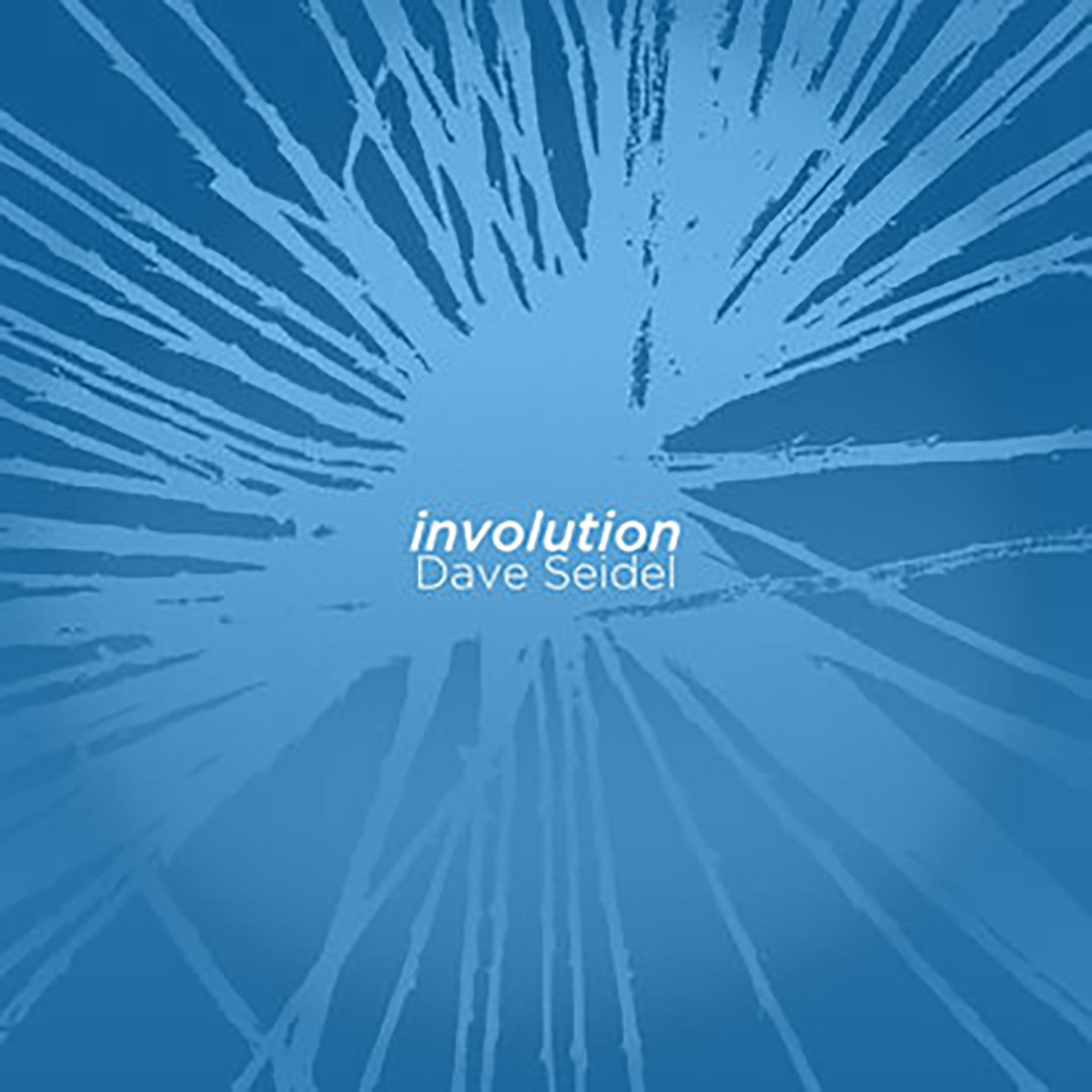 This challenging and overwhelming double album is my first exposure to this NH-based composer, and it was quite a synapse-frying introduction to his uncompromising vision. While Seidel has only been releasing albums as a composer for the last decade or so, he was an active part of NYC's flourishing Downtown music scene in the '80s, and his work feels like it is spiritually descended from that era. Or perhaps from even before that, as he cites Alvin Lucier and La Monte Young as key influences. Unlike most artists inspired by Young, however, Seidel did not stop at dabbling in Just Intonation. Instead, he took "Young's ideal of previously unheard sounds, those that may engender new sensations and emotions in the listener" and ran with it, delving even deeper into unusual tunings until he could bring to life the sonorities that he was chasing. In practical terms, that means that the two compositions here ("Involution" and "Hexany Permutations") are longform drone works teaming with strange and buzzing harmonic collisions, which makes Phill Niblock's XI Records exactly the right home for this epic. While I suspect many people will find Seidel's single-minded and no-frills approach to conjuring unfamiliar sounds intimidatingly difficult, this album will definitely make a big impression on anyone fascinated by the physics and physicality of sound.
This challenging and overwhelming double album is my first exposure to this NH-based composer, and it was quite a synapse-frying introduction to his uncompromising vision. While Seidel has only been releasing albums as a composer for the last decade or so, he was an active part of NYC's flourishing Downtown music scene in the '80s, and his work feels like it is spiritually descended from that era. Or perhaps from even before that, as he cites Alvin Lucier and La Monte Young as key influences. Unlike most artists inspired by Young, however, Seidel did not stop at dabbling in Just Intonation. Instead, he took "Young's ideal of previously unheard sounds, those that may engender new sensations and emotions in the listener" and ran with it, delving even deeper into unusual tunings until he could bring to life the sonorities that he was chasing. In practical terms, that means that the two compositions here ("Involution" and "Hexany Permutations") are longform drone works teaming with strange and buzzing harmonic collisions, which makes Phill Niblock's XI Records exactly the right home for this epic. While I suspect many people will find Seidel's single-minded and no-frills approach to conjuring unfamiliar sounds intimidatingly difficult, this album will definitely make a big impression on anyone fascinated by the physics and physicality of sound.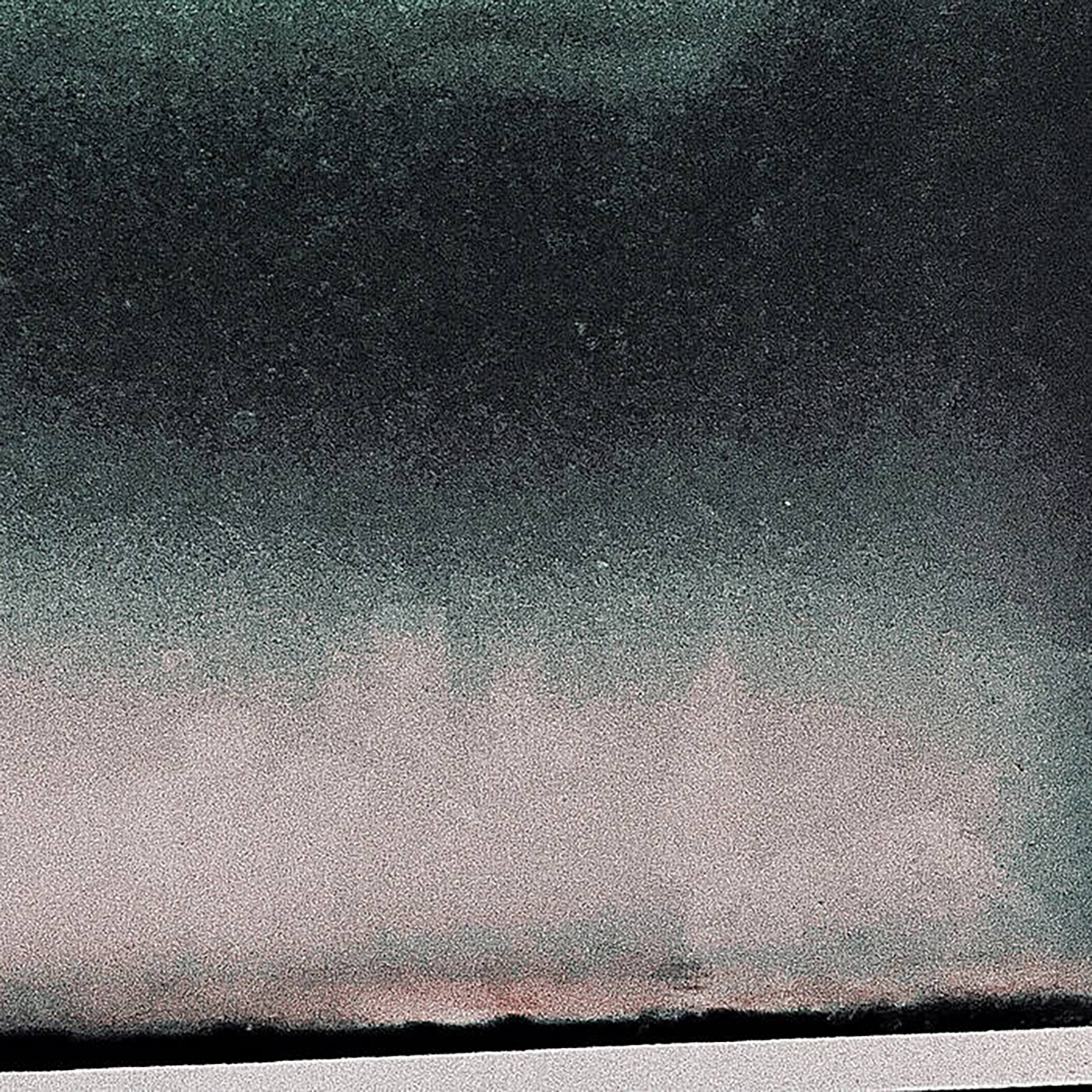 This is the first installment of "an ongoing album series with an undecided end point examining futility and beauty." Those are hardly new themes for Kyle Bobby Dunn, so I am not sure why they needed their own series, but any new KBD opus is fine by me. Dunn is a unique figure in the ambient drone milieu for a number of reasons, but the most significant for me is his unique gift for crafting soundscapes with a very real emotional intensity at their core. When he directly hits the mark with a composition like "Triple Axel on Cremazie" or "The Searchers," he achieves something poignant and transcendent that is damn hard to come by. I suppose one caveat with Dunn's work is that such moments are usually hidden within sprawling double-, triple-, or quadruple-LP epics, but this latest album is a more focused and concise release. More importantly, the bulk of the album is devoted to the absolutely sublime 48-minute "Fantasia on a Theme of Affection." The other two pieces are memorable as well, arguably making this the closest that Dunn has come to releasing an "all killer, no filler" masterpiece.
This is the first installment of "an ongoing album series with an undecided end point examining futility and beauty." Those are hardly new themes for Kyle Bobby Dunn, so I am not sure why they needed their own series, but any new KBD opus is fine by me. Dunn is a unique figure in the ambient drone milieu for a number of reasons, but the most significant for me is his unique gift for crafting soundscapes with a very real emotional intensity at their core. When he directly hits the mark with a composition like "Triple Axel on Cremazie" or "The Searchers," he achieves something poignant and transcendent that is damn hard to come by. I suppose one caveat with Dunn's work is that such moments are usually hidden within sprawling double-, triple-, or quadruple-LP epics, but this latest album is a more focused and concise release. More importantly, the bulk of the album is devoted to the absolutely sublime 48-minute "Fantasia on a Theme of Affection." The other two pieces are memorable as well, arguably making this the closest that Dunn has come to releasing an "all killer, no filler" masterpiece.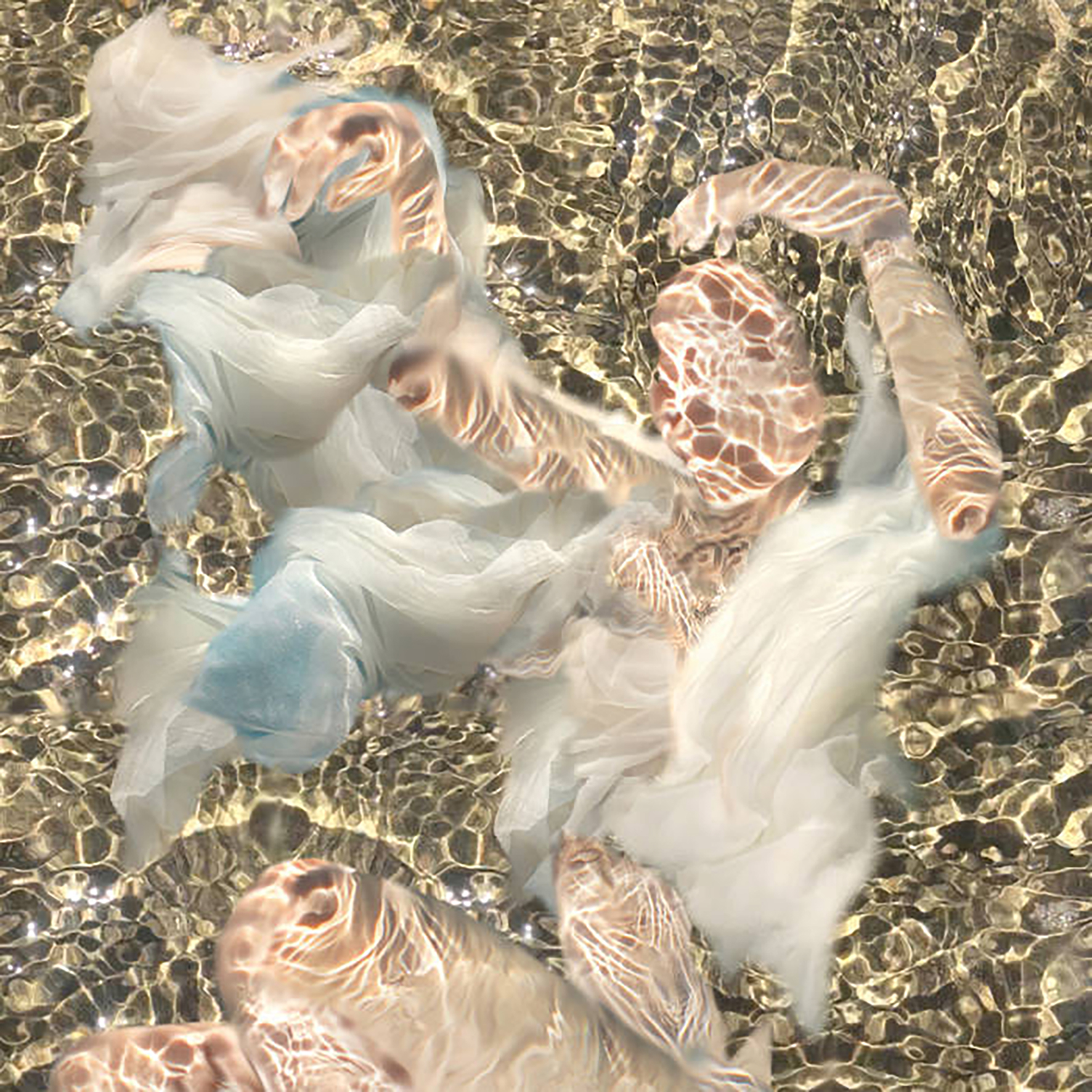 I loved Sage Fisher's last album (the wonderful and hallucinatory Liminal Garden), so I was quite eager to find out how she would follow such a unique vision. Now that Body of Water has been released, I have my answer and it is very much an expectation-subverting one. While the harp arguably remains Fisher's primary instrument, her vocals take a much more prominent role with this latest opus. That is a twist, certainly, but it is not THE twist, which is that Fisher enlisted the aid of acclaimed producer Tucker Martine to craft a suite of songs that feels like a sensual and psychotropic strain of outsider R&B. Whether it is close enough to the real thing to make an impact beyond underground electronic music circles remains to be seen, but Fisher's stylistic reinvention is an extremely cool and surprising one regardless. Admittedly, it took me a few listens to fully warm to the unabashed pop hooks that fill this album, but Fisher's more lysergic impulses are never far away, resulting in an immersive swirl of delightful mindfuckery anchored by memorable hooks, simmering grooves, and a newly unveiled soulfulness.
I loved Sage Fisher's last album (the wonderful and hallucinatory Liminal Garden), so I was quite eager to find out how she would follow such a unique vision. Now that Body of Water has been released, I have my answer and it is very much an expectation-subverting one. While the harp arguably remains Fisher's primary instrument, her vocals take a much more prominent role with this latest opus. That is a twist, certainly, but it is not THE twist, which is that Fisher enlisted the aid of acclaimed producer Tucker Martine to craft a suite of songs that feels like a sensual and psychotropic strain of outsider R&B. Whether it is close enough to the real thing to make an impact beyond underground electronic music circles remains to be seen, but Fisher's stylistic reinvention is an extremely cool and surprising one regardless. Admittedly, it took me a few listens to fully warm to the unabashed pop hooks that fill this album, but Fisher's more lysergic impulses are never far away, resulting in an immersive swirl of delightful mindfuckery anchored by memorable hooks, simmering grooves, and a newly unveiled soulfulness.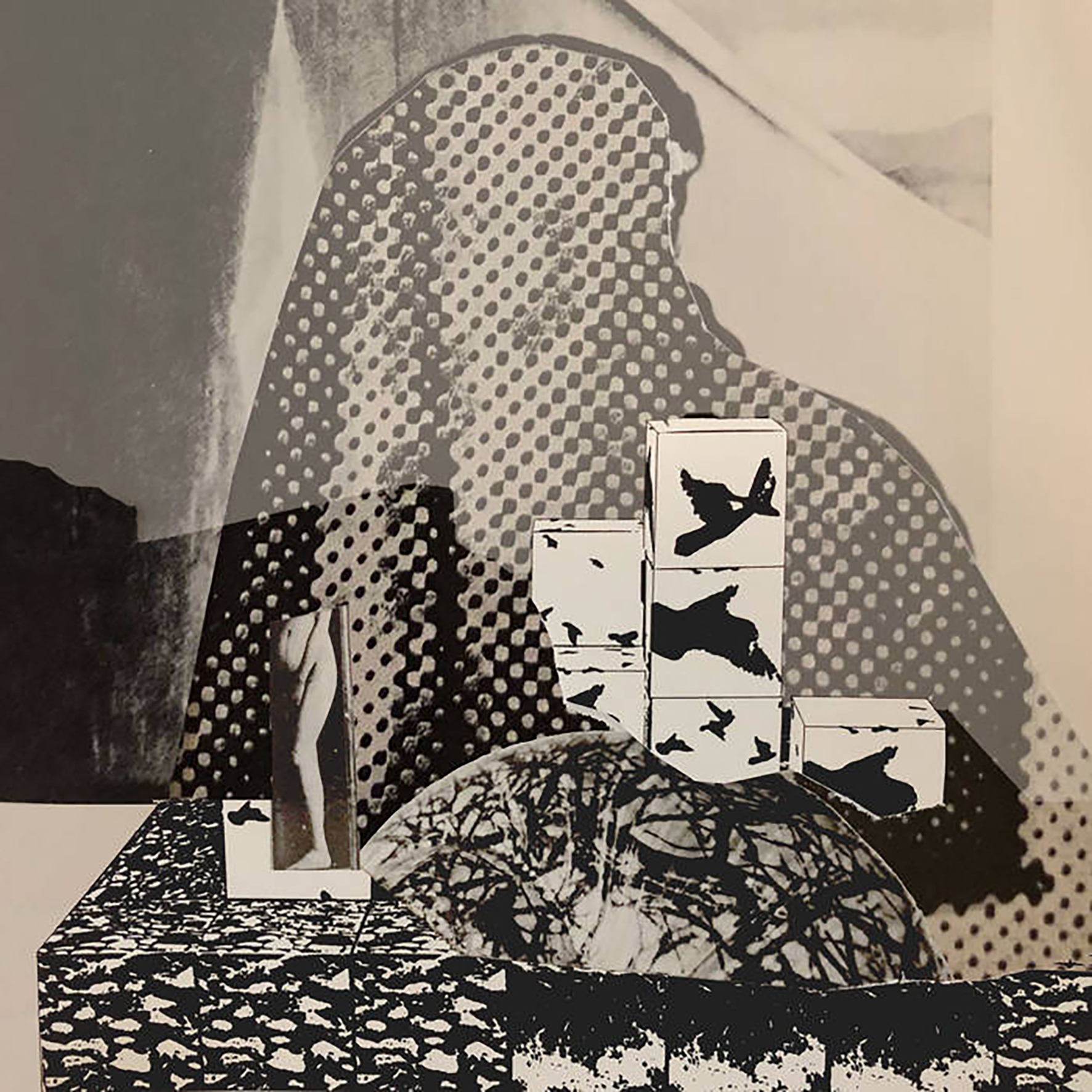 There was a period between 2010 and 2013 in which Rachel Evans seemed like a universally celebrated and ubiquitous figure in the "experimental music" milieu, as she released a flurry of tapes and LPs on a variety of great labels in a very short span. Since then, she has embraced a considerably more quiet and homespun approach to her art, self-releasing a steady and increasingly eclectic stream of limited edition tapes/CDrs/art objects to the delight of fans like myself. This latest release is an especially divergent and ambitious one, as Evans rarely releases vinyl and even more rarely shifts her focus towards acoustic instrumentation or conventional songcraft. The latter deserves an asterisk though, as there is only one brief song lurking within these two longform soundscapes and it largely appears in submerged form, but it is still quite a good one regardless. While the appearance of that surprise song is very much an album highlight, it is just one part of a larger and wonderfully hallucinatory whole. In fact, If We Were Landscapes is strong evidence that the golden age of Motion Sickness of Time Travel is still unfolding and that Evans' acclaimed run of albums like Seeping Through the Veil of Unconscious was actually just the tip of an expanding iceberg of future delights.
There was a period between 2010 and 2013 in which Rachel Evans seemed like a universally celebrated and ubiquitous figure in the "experimental music" milieu, as she released a flurry of tapes and LPs on a variety of great labels in a very short span. Since then, she has embraced a considerably more quiet and homespun approach to her art, self-releasing a steady and increasingly eclectic stream of limited edition tapes/CDrs/art objects to the delight of fans like myself. This latest release is an especially divergent and ambitious one, as Evans rarely releases vinyl and even more rarely shifts her focus towards acoustic instrumentation or conventional songcraft. The latter deserves an asterisk though, as there is only one brief song lurking within these two longform soundscapes and it largely appears in submerged form, but it is still quite a good one regardless. While the appearance of that surprise song is very much an album highlight, it is just one part of a larger and wonderfully hallucinatory whole. In fact, If We Were Landscapes is strong evidence that the golden age of Motion Sickness of Time Travel is still unfolding and that Evans' acclaimed run of albums like Seeping Through the Veil of Unconscious was actually just the tip of an expanding iceberg of future delights.
